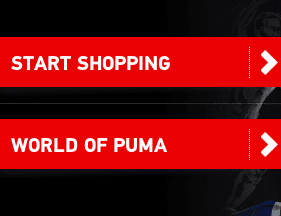When online retail took off roughly 10 years ago, many manufacturers and distributors were resistant about opening an online store. There were many reasons for this then, and now, including the following.
- Their business processes are complex and managed by back office systems that are difficult to integrate.
- Their customers were not shopping online or requesting it.
- Customer-specific pricing is common, and products may be complex to configure.
- Many different types of buyers and buying locations, making an ecommerce implementation complex.
- Lack of expertise in ecommerce and digital marketing.
Another major reason that B2B companies do invest in ecommerce is the fear of creating channel conflict.
Many manufacturers and distributors worry that opening an online store will create a conflict with their direct sales representatives or other channel partners. Sales reps traditionally worry that if they are not the primary source of contact for a customer, they will lose sales opportunities or commissions.
Many manufacturers and distributors worry that opening an online store will create a conflict with their direct sales representatives or other channel partners.
Additionally, businesses are leery of double paying commissions to sales reps or channel partners who do not contribute directly to a sale. They often ask, “As sales move online, how does the company appropriately assign attribution for a sale and pay commissions?”
Ironically, during this same 10-year period, manufacturers and distributors have invested heavily in customer-relationship systems to support sales force automation. As most sales people will attest, those systems are typically management tools that do not necessarily make the job of selling products any easier.
How many manufacturers and distributors have invested in online tools that really help sales reps do their jobs? Very few.
Time to Sync B2B Sales Channels
Companies that are embracing digital enablement realize that more customer engagements lead to more sales. That includes online sales and marketing to ensure products are visible during the buying process. It also includes good old-fashioned conversations and face-to-face meetings with buyers and influencers.
When a sales rep calls on a prospect, he should have instant access to the information that a prospect requires. That is what a customer is used to when she shops online. If a customer wants to know order status or lead time for a product, a rep should be able to access that in real time and not refer a customer to a call center or research it and then respond later.
Manufacturers and distributors should leverage their ecommerce platforms and websites to deliver useful applications to their sales teams, to be responsive to customers at all times. To do this, manufacturers and distributors should extend their B2B online stores to add more tools and functionality to support sales reps and what they do on a day-to-day basis. By using an existing store, they can tie in all the rich information that is already available there, including customer-specific pricing, inventory availability, and product information.
Here are my suggestions for critical features in a B2B ecommerce platform to empower a sales staff.
- Add a sales rep dashboard that is tied to key performance indicators, such as quota performance, commissions, sales by customer, sales by product, trending products, customer order history, and order status.
- Add alerts or messaging that is configurable to tell a rep when a customer has placed — or not placed — an order or purchased specific products in a given period of time.
- Add configuration, price, and quote capabilities so reps can easily generate a proposal from their mobile or laptop device.
- Add workflow support for the entire quotation process, from a request to a quote to a click-to-approve and order, so that customers can act instantly on a quote and reps do not have to be involved in that part of the process.
- Add reporting and analytics capabilities for reps to view abandoned carts and customer behavior on the website so they have visibility into areas of interest and lost sales.
- Teach your reps to use the rich product content in your online store as they are making calls in the field. They will have instant access to specs, pricing, availability, comparisons, data sheets, and videos. They will also have up-sells, cross-sells and substitute products at their fingertips to guide conversation with buyers.
- Allow your reps to preconfigure shopping lists that can be used by buyers to quickly place reorders.
- Implement subscriptions for recurring orders so reps can easily set them up for customers.
- Provide instant chat capabilities to connect reps to customers who are shopping online.
Once you have these tools in place , train your reps to use your online store and sales application to be more productive in the field.
B2B businesses will also need to address compensation. Many brand manufacturers are adopting a policy, for compensation, of not differentiating where a sale originated. Their position is they don’t really care if the order came in online or on the phone. The point is to drive revenue.
Orders coming in online are less expensive to process. Sales reps and customer service reps will have more time to focus on strategic activities if they are not dealing with transactional orders or inventory questions.
How to Sync Sales Channels
Start with an investment in a scalable B2B ecommerce platform. Build a superior customer experience. This is the same thing you would do for your customers anyway.
Then, add new pages and integrations to your business and customer-management systems to pull the required data and deliver it in a way that is useful to reps. Think of a dashboard for sales people. Potentially, your customer management systems can also be integrated to pull in daily activities or key customer information.
Create workflows and required web pages to support quotes if you do not already do so. You may even want to add the capability to generate a PDF quote along with appropriate collateral if your products are suited to that type of approach.
Finally, aggressively promote and train your reps and channel partners about the benefits and use of the various tools you have in place. A smart rep is always looking for ways to be more productive. Having a single application that delivers the aforementioned functionality that runs on a tablet or smartphone is a good way to get a sales rep’s attention.




